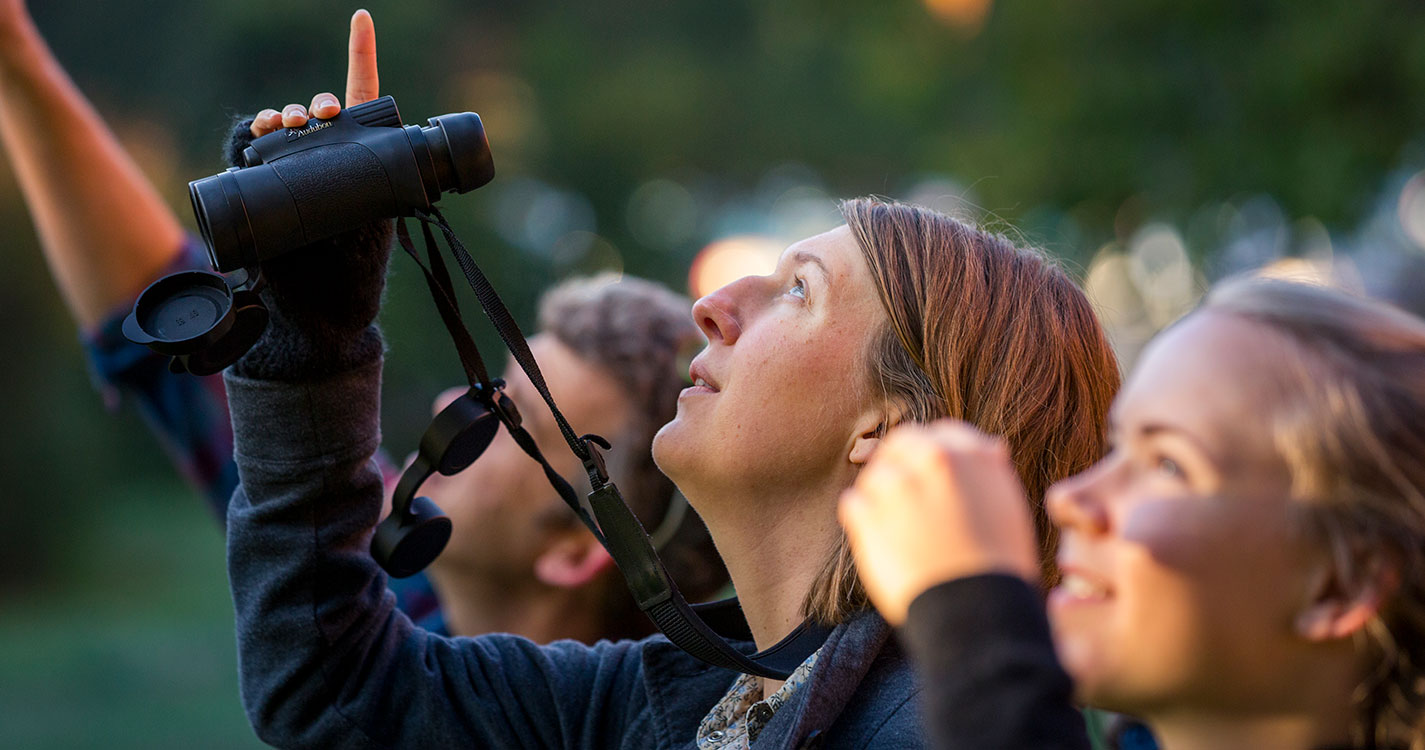A sharp, sweet sound breaks the silence on Willamette’s campus one morning, and Professor of Biology David Craig stops in his tracks.
Standing on Winter Street with a small group of students and faculty, he pulls out his binoculars and cranes his neck. “Ooh!” he says, all smiles. “I hear starlings.”
As the group looks up through their binoculars, they see a few birds circling a communication tower behind the Oregon Civic Justice Center.
Every Tuesday morning since the start of the semester, Craig has been leading a beginner’s bird-spotting walk, often with students and the Bird Nerds Club. In honor of Willamette’s 175th anniversary — and also in honor of fun — Craig will complete 175 walks by the end of the year. He invites students, faculty members and staff to meet him at 8 a.m. in the Olin Science Building lobby now through Dec. 12.
“I get asked bird questions all the time,” he says, “so I thought this is something I could do for the community.”
Winging it
On one recent walk, Craig entertained students and faculty with bird trivia and sound effects. He imitated the sound of birds alerting others of predators — “The faster the call, the more dangerous the predator,” he says — and noted the copycat nature of starlings, which had mimicked evening grosbeaks with a mix of sharp whistles, chirps and purr-like calls.
That morning, they identified 22 of the 92 species seen on campus. They also encountered a red-tailed and a Cooper’s hawk, the first sighting of the two birds in one stroll.
Biology major Marcia Smith ’18 appreciates Craig’s knowledge and passion for ornithology. Although she's spent two summers working at a nature preserve in her native Idaho, she enjoys learning more about the species found on campus.
“David Craig, as well as other people on the walk, really took time to explain each bird and their ecological role to me,” she says. “It was really a learning experience.”
The walks benefit more than campus birders. With every sighting, Craig enters the location and species into a phone app called eBird, a global database of bird records. The app uses crowdsourcing, so every new report improves its ability to predict a species’ location — a boon for birders and conservation in general.
“Willamette is a small campus with a modest bird habitat,” notes Craig, “but the high frequency of observations by community members has made it a hotspot location many birders can use.”
Observations entered in eBird also fuel Merlin Bird ID, an app that uses the data to help beginners identify common birds.
Craig plans to continue his walks next spring but no date is set yet.
“Bird watching takes a little bit of practice, and a good pair of binoculars makes a big difference,” he says. “But once you do it, it’s so fun. Anywhere you go, you can find something.”

